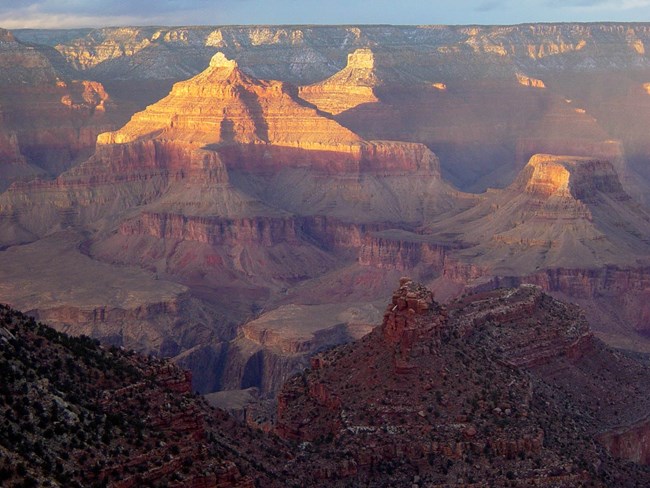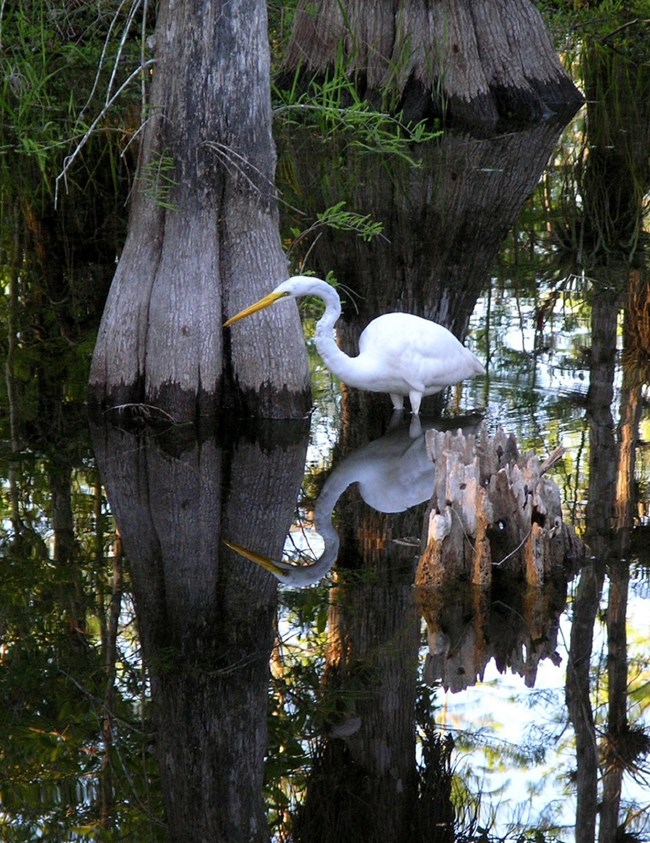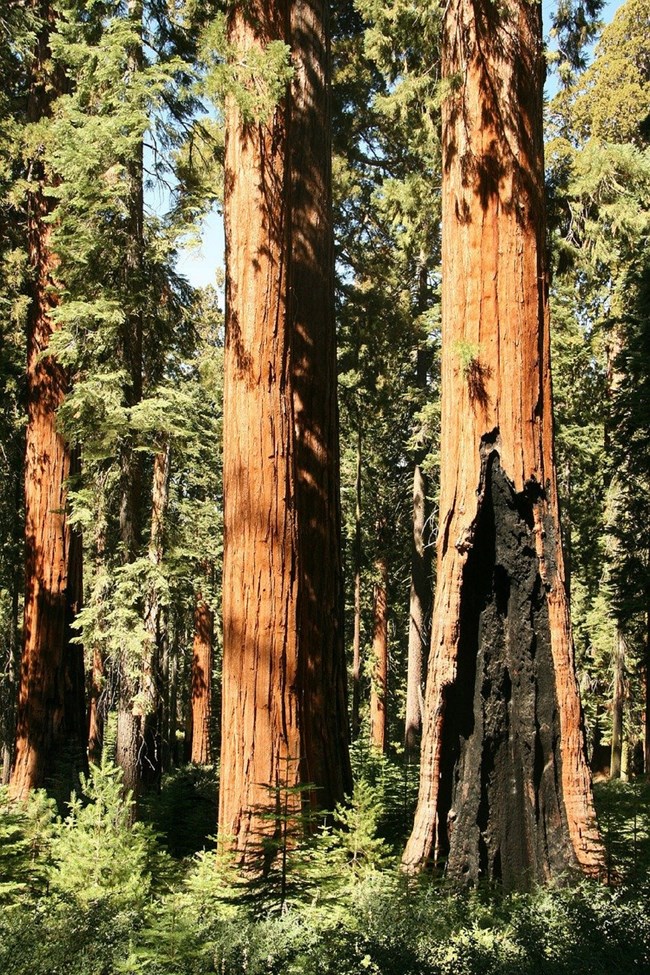Last updated: March 29, 2021
Article
World Heritage Sites in the United States: A Perspective from the National Park Service

NPS photo.
More than 40 years ago, the United States was the first country to sign the World Heritage Convention, a pioneering treaty for international cooperation in the preservation of the world’s most significant natural and cultural treasures. The United States played a key role in developing the Convention, which itself is part of the global outgrowth and evolution of the American national park idea. Since 1978, the United States has nominated some of its most iconic sites, as well as some lesser-known ones, for inclusion on the prestigious World Heritage List. To date, 24 U.S. sites have been selected and inscribed on the World Heritage List.
The primary purposes of the World Heritage Convention are to enhance worldwide understanding and appreciation of our shared heritage and through international cooperation help preserve a relatively small number of exceptional natural and cultural properties around the world that have been formally determined to possess “outstanding universal value” to humanity. Just as national parks are set aside on behalf of an entire nation, World Heritage Sites, though remaining under the management of their respective countries, have been identified as having such universal significance that the entire global community has a stake in their conservation.
U.S. participation in the Convention is assigned by law to the Secretary of the Interior, and responsibility for carrying this out has been delegated to the Assistant Secretary for Fish and Wildlife and Parks. The National Park Service’s Office of International Affairs (OIA) serves as the staff office with day-to-day responsibility for the program. OIA oversees the development of nomination files and manages the process for adding prospective sites to the U.S. Tentative, or candidate, List for possible future nomination. OIA also coordinates reporting to the World Heritage Committee on the status of U.S. World Heritage sites.
The U.S. has played a leadership role in the Convention since its inception, ratifying the Convention in 1973 and hosting the first session of the World Heritage Committee at which properties were inscribed on the World Heritage List in 1978. Included among the first set of 12 World Heritage Sites were Mesa Verde National Park and Yellowstone National Park. In nominating these parks, one famous for its spectacular natural features and the other an iconic emblem of ancient Indian culture, the U.S. was making a point of including both natural and cultural sites on the World Heritage List. The notion of preserving both nature and culture through a single international conservation treaty was originally promoted by the U.S. and continues to make the World Heritage Convention unique among international conservation instruments.

National Park Service photos.
In the early years of the program, the U.S. nominated areas under the administration of the National Park Service. There were a number of reasons for this, primarily because the National Park System offers so many excellent candidates, including as it does some of the nation’s most important natural and cultural treasures. Secondly, the fact that these sites were under the exclusive jurisdiction and direct management of the Federal government ensured their long-term preservation and simplified the nomination process, as there was no need to consult extensively with other levels of government or private parties, since the 1980 Amendments to the National Historic Preservation Act require all non-Federal property owners to consent in writing to having their property nominated to the World Heritage List. For this reason, and unlike most of the rest of the world, in the U.S. it has never been possible to nominate historic towns or districts with a multitude of privately owned properties to the World Heritage List.
Eventually, the U.S. did expand its portfolio of World Heritage sites beyond National Parks by nominating Monticello and the University of Virginia, owned respectively by a private foundation and the Commonwealth of Virginia. It also nominated Cahokia Mounds, owned by the State of Illinois, as well as Taos Pueblo, which is under the jurisdiction of a tribal government. The U.S., along with Canada, helped pioneer the concept of “trans-boundary” World Heritage Sites, a single World Heritage Site with components in two or more countries, by nominating two complexes of parks along the U.S.-Canada border. U.S. listings in more recent years have included Papahanaumokuakea Marine National Monument in Hawaii, the Monumental Earthworks of Poverty Point, a Louisiana historic site, the San Antonio Missions (which include the Alamo), and the 20th-Century Architecture of Frank Lloyd Wright, a group of eight buildings in six states that have both private and public owners.
The road to inclusion on the World Heritage List is a long one and success is not always assured. Over the years, there have been several U.S. nominations that were not accepted by the World Heritage Committee, made up of a rotating group of 21 nations elected to four-year terms. The Committee which meets annually to consider proposed nominations is the ultimate arbiter of what is added to the List. However, before a nomination reaches the Committee, several years will have already been spent putting together the nomination dossier.
The first step in the nomination process is inclusion in a country’s Tentative List. The U.S. Tentative List was revised in 2017 and currently includes 19 properties or groups of properties deemed eligible for nomination. There are many potentially worthy candidates, but the number of sites that can be added is limited, given that by the rules of the World Heritage Committee countries can only nominate one site per year. For a variety of reasons, including the expense and complexity of developing a nomination dossier, the US has nominated sites on a less frequent basis than some other countries. Nominations are developed by the property owners with advice and assistance from the NPS Office of International Affairs. When a country puts a site forward, its nomination is reviewed by one of the Committee’s advisory bodies, either the International Council on Monuments and Sites (ICOMOS) for cultural properties, or the International Union for the Conservation of Nature (IUCN) for natural properties. The review includes an on-the-ground evaluation of the proposed site as well as desk reviews of the nomination dossier by subject matter experts. The advisory bodies make recommendations to the World Heritage Committee as to whether the proposed site meets the criteria for inscription.

CC0
Inclusion on the World Heritage List benefits sites in a number of ways. Most obviously, it brings a significant amount of prestige, particularly in regions such as Europe, Asia, and Latin America where achieving the designation is seen as the ultimate international validation. The prestige and visibility of the listing can boost tourism, particularly from foreign visitors, to the site, especially if marketing programs championing World Heritage status are undertaken.
World Heritage status also enhances the ability of sites to raise funds, primarily from the private sector. (There is no additional federal funding support for World Heritage sites.) Finally, being a World Heritage Site can provide an added level of protection in the sense that the spotlight of international attention can shine on threats to the site. There have been several occasions over the years in which sites in the U.S. faced threats that were resolved in part through the spotlight of the World Heritage Convention.
For example, at Taos Pueblo, the tribal government used the site’s World Heritage status to negotiate an agreement with the Federal Aviation Administration (FAA), whose approval was needed to expand the nearby municipal airport. Under the terms of a Memorandum of Agreement between the tribe and the FAA, overflights over Pueblo lands will be minimized. Similarly, a three-decade struggle to prohibit mining in the Flathead River valley in British Columbia was finally resolved after the World Heritage Committee authorized a mission to the joint Waterton-Glacier International Peace Park, a joint trans-boundary World Heritage site. The mission’s report concluded that any mining or energy development would devastate the ecology of the region and pollute the Flathead River which flows into the U.S. and forms the western boundary of Glacier National Park. Immediately after the report was issued, the Province of British Columbia and the State of Montana entered into an agreement to prohibit any mining in the Flathead area on both sides of the border.
These examples clearly depict the powerful moral suasion that can be brought to bear when a site recognized by the international community is threatened: to be considered as part of the common heritage of humanity elevates a site and automatically raises the stakes for any potential development that could threaten it.
While U.S. World Heritage Sites occasionally come under threat, World Heritage sites around the world often face very serious challenges, particularly in countries facing war, civil strife or economic stress. The lack of proper management often contributes to problems facing World Heritage properties, particularly when the designation brings increases in tourism. In addition, many sites around the globe face threats ranging from poaching of wildlife, pressures from energy development or extractive industries, various types of incursions into protected areas and much more. As part of its responsibility to promote international cooperation in helping preserve these outstanding places, the National Park Service developed a World Heritage Fellowship program providing opportunities for site managers from developing countries to travel to the U.S. for the purposes of training and exchange with counterparts at American National Parks that are World Heritage Sites. With decades of experience in managing large numbers of visitors as well as other aspects of park operations, the NPS is well placed to share lessons learned with colleagues from overseas. Since 2009, fellows from a variety of countries in Africa, Latin America, and Asia have spent on average four weeks in a U.S. National Park collaborating with NPS peers on ways to deal with the challenges of managing a World Heritage Site.
The most recent challenge to U.S. participation in the World Heritage Convention began in late 2011 when the General Conference of UNESCO voted to admit Palestine as a member state. U.S. law holds that if a UN body grants membership to Palestine, the U.S. must suspend payments to that organization and accordingly the U.S. State Department froze U.S. payments to UNESCO and to the World Heritage Fund, which administers the World Heritage global program and from which developing countries can seek assistance to help preserve their World Heritage Sites. Since that time, the US withdrew from membership in UNESCO, but remains a signatory to the World Heritage Convention and has continued to nominate its sites for inscription on the World Heritage List (there is no prohibition on doing so, but many countries look askance at nominations from countries that are not contributing to the operating costs of the program). Three US sites have been listed since 2011: Poverty Point, an ancient mound site built over 3,400 years ago by a hunter-gatherer civilization; the San Antonio Missions, Spanish colonial complexes of the early 18th century; and the eight buildings designed by the famous 20th century architect Frank Lloyd Wright, inscribed as a single World Heritage Site.
Despite the on-going issue of non-payment of U.S. dues, there is growing interest among the U.S. public in seeking global recognition for unique American places through the World Heritage program. As World Heritage grows in stature and visibility and becomes more well-known in the U.S., that interest will likely only increase. The NPS Office of International Affairs fields many requests on a regular basis from proponents of prospective nominations. It is ironic that the growing U.S. interest in nominations comes at the same time as the cloud of the dues issue hangs over U.S. participation in World Heritage. The sooner this issue is resolved, the sooner the U.S. can resume its historic leadership role in the World Heritage Convention and continue inviting the world to join in recognizing the value of key American treasures that form the common heritage of humankind.
